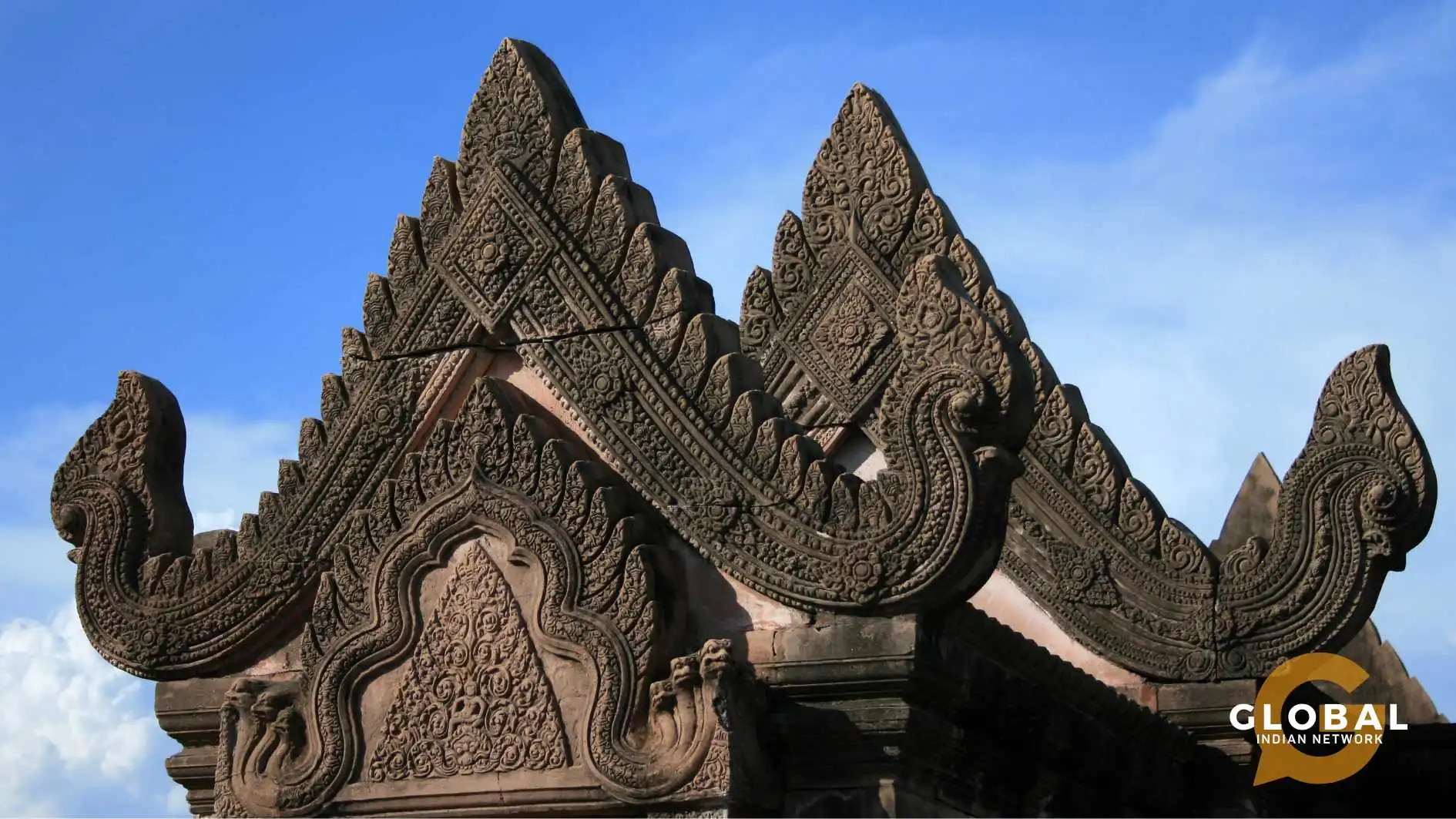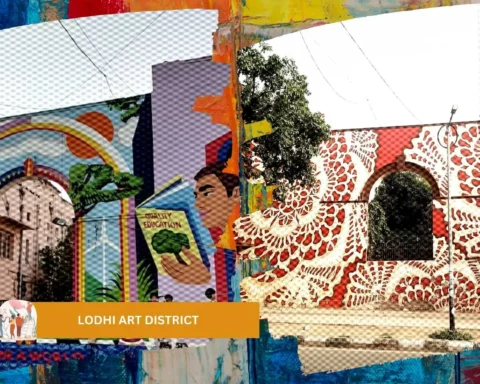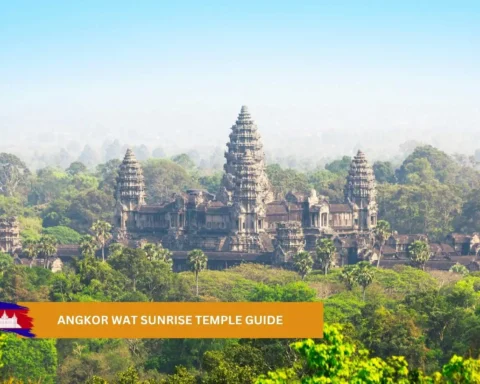Temple art has historically served as a way of expressing artistic creativity, cultural values, and religious devotion. Sacred sculpture and architecture have developed throughout Asia with distinct regional influences. The contrasts between Khmer and Indian temple art are among the most intriguing similarities. Despite being linked by the advent of Buddhism and Hinduism, these two traditions evolved into unique forms influenced by historical shifts, local beliefs, and geographic location. Exploring the differences between Indian and Khmer temple art reveals how religion, resources, and ideologies shape two distinct yet important architectural traditions.
Table of Contents
Historical Context
The differences between Indian and Khmer temple art begin with their origins in time and place. Compared to Khmer art, Indian art has a far longer history. It started in the third century BCE and developed over the course of hundreds of years, peaking under strong dynasties like the Pallava, Chola, and Gupta empires. Due to their close ties to Buddhism, Jainism, and Hinduism, these temples were built according to rigorous design principles known as Vastu Shastra. Indian temples, which also adhered to certain architectural styles like Dravidian (found in South India) and Nagara (found in North India), were often constructed using mandalas or sacred geometric layouts.
In contrast, Khmer temple art started much later, in the 9th century CE, during the period of the Khmer Empire, which was based in modern-day Cambodia. Indian architecture, religion, and culture had a significant influence on the Khmer rulers. Many Indian concepts were embraced by them, including the worship of Hindu gods, the belief in Mount Meru (a sacred peak in Buddhist and Hindu cosmology), and the notion that the king was a celestial sovereign (Devaraja).
The Khmer did more than simply replicate Indian temples, though. They changed and modified Indian ideas to fit their own surroundings, culture, and beliefs. Khmer temples, for instance, were constructed more horizontally, employing broad platforms and sizable moats to symbolize the cosmos, whilst Indian temples frequently concentrated on vertical constructions like lofty towers (shikharas or vimanas). An excellent illustration of this is the Hindu temple known as Angkor Wat, which was constructed in the distinctive and regional Khmer style to commemorate the Hindu god Vishnu.
It is also evident in the sculpture and artwork. Both Khmer and Indian temples feature carvings of gods and goddesses, but the Khmer figures are more idealized, serene, and mild, which reflects their particular artistic preference.

Differences between Indian and Khmer Temple Art
Architectural Forms and Symbolism
One of the key differences between Indian and Khmer temple art is seen in how their temples are designed and what they symbolize.
Indian Temple Forms
The two primary architectural styles of Indian temples are the Dravidian style in South India, which is defined by its pyramid-like vimanas and large gateway towers called gopurams, and the Nagara style in North India, which features towering, beehive-shaped towers called shikharas. These temples are constructed according to Vastu Shastra, which is a set of traditional Indian architectural principles, using a sacred geometric design known as a mandala. As the devotee passes through several areas on their way to the garbhagriha, the innermost shrine where the deity is housed. This arrangement symbolizes a spiritual journey.
Khmer Temple Forms
Khmer temples, such as Angkor Wat, were influenced by Indian techniques, even though they developed their unique shape, known as the temple-mountain or prasat. Buddhist and Hindu traditions hold that Mount Meru is the center of the universe, and these temples are built to represent this idea. These include several levels of enclosures, large towers, and moats that show both royal power and spiritual significance. Large, symmetrical buildings often served as both temples and the graves of monarchs.
Both communities used temple design to communicate religious authority and belief, as these architectural styles show, though in very different ways.
Sculptural Styles and Iconography
Another important area where we see the differences between Indian and Khmer temple art is in their sculptures.
Indian Sculpture
High-relief sculptures with identifiable figures cover the walls of Indian temples. These often contain stories from the Ramayana, Mahabharata, and Puranas. Deities with many limbs and expressive stances include Shiva, Vishnu, and Parvati. There are intricate carvings of plants, animals, dancers (tandava), and even commonplace and romantic scenes. A stela is a slab or background that gives the story a framed, dramatic appearance and many of these figures are attached to it.
Khmer Sculpture
Free-standing Khmer sculptures are particularly found in temples such as Angkor Wat. In other words, they have no back support and are completely cut around. Designed to be viewed from all angles, these statues demonstrate the Khmer emphasis on three-dimensional art. Their figures seem serene, graceful, and elegant, like devatas (female deities) and apsaras (celestial dancers). Since the Khmer kings were regal and divine, the art style is more idealized and serene.
Materials and Technical Innovations
The differences between Indian and Khmer temple art are also seen in the materials and building techniques they used.
Indian Temples
Depending on the local resources, marble, granite, or sandstone were frequently used to build Indian temples. Because of the hardness and durability of these stones, Indian builders were able to produce intricate sculptures and tall buildings. The Ellora temples, which were carved into the side of stone hills in the seventh century CE, are a stunning example. Indian temple architecture also employed unique techniques to create intricate reliefs on walls and pillars as well as lofty towers.
Khmer Temples
Khmer temples were built on a foundation of laterite, a light reddish stone that was easily cut. Because sandstone is softer and allows for fine detail, it was employed for carvings and embellishments. Banteay Srei, renowned for its stunning red sandstone artwork, is one of the best places to see Khmer carving. Angkor Wat and Bayon exhibit the unique use of Khmer architects’ design elements, including corbelled arches, which are tunnels composed of overlapping stones, and floating galleries. These various materials and techniques demonstrate how indigenous resources and inventiveness influenced the distinctive forms of temple painting in India and Cambodia.
Conclusion
Analyzing the differences between Indian and Khmer temple art in Cambodia reveals a story of invention, evolution, and legacy. While Khmer art incorporated the cosmic symbolism, sculptural storytelling, and layout of Indian temple art, it also created enormous temple-mountains, free-standing statues, and regal hallways that mirrored the philosophy of devaraja. These traditions collectively demonstrate how regional societies can honor distant heritage while establishing distinctive artistic traditions.

FAQs
What is the Khmer-style temple?
In order to symbolize the mountain ranges surrounding Mount Meru, the mythical home of the gods, Khmer temples were usually surrounded by a concentric series of walls with the central sanctuary in the center. The areas between these walls and between the innermost wall and the temple itself are known as enclosures.
What do you know about Indian temple art?
The Nagara, Dravida, and Vesara styles are the three main categories into which Indian temple architecture can be divided. Garbhagriha, also known as the sanctum, mandapa, shikhara, and vaahan, are the main parts of a temple.
Why do Khmer temples resemble Indian temples?
Khmer temples were influenced by Indian religious texts and architects through trade and political exchange.









